Welcome to our Psychology of Inspirational Women series, in which Licensed Clinical Psychologist Dr. Janina Scarlet talks us through the mindset of our favorite female characters. Spoilers for the full series of The Legend of Korra follow.
If you watched The Legend of Korra, you might have first sensed that something is wrong with Korra at the end of Season Three. During Jinora’s ceremony, as Tenzin delivers his speech thanking the Avatar for all her help and wishing her a speedy recovery, Korra is seen sitting in a wheelchair, tears in her eyes, and a stony look on her face.
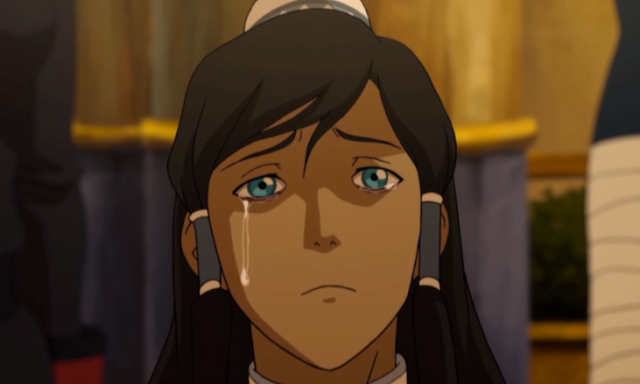
In the beginning of the fourth season, Korra seems to be avoiding her friends and family, having drastically changed her looks. She is also jumpy and irritable; she is haunted by frequent flashbacks and nightmares of her past traumas, and seems to be having hallucinations. In short, Korra seems to be running away from herself, unwilling to think or talk about what happened to her with others or even be around the people that remind her of her experiences. She seems to be suffering from posttraumatic stress disorder (PTSD) with possible psychotic features. How did she get here? What events caused such an imbalance in the Avatar, one who is supposed to be the very essence of restoring balance in the world?
Let’s take a look at the series to examine Korra’s traumatic progression. First, a little background is in order. Korra is an Avatar, a human being who can control the four elements – fire, earth, water, and air. An Avatar can also connect with spirits and is meant to restore balance in the world. After the Avatar dies, his or her spirit reincarnates into another human being, making them the new Avatar.
Each of the four seasons of the show depicts Korra’s heart-wrenching battles. As the series begins, Korra is still fairly new to being an Avatar and has not yet mastered all of the four elements, especially struggling with airbending. In order to improve her skills Korra moves to Republic City where she trains with Tenzin, the son of Aang, the previous Avatar. During her time in Republic City Korra also joins a probending team, the Fire Ferrets, with two brothers, Mako, and Bolin. Korra becomes enamored with Mako, but he pushes her away and begins dating another woman, Asami.
Korra’s trauma history:
When Republic City is threatened by a group of people who call themselves the Equalists, Korra and her new friends, Mako, Bolin, and Asami, attempt to stop them. The Equalists’ leader, Amon, rallies the non-benders of Republic City, stating that the benders need to be stopped. Amon himself is somehow able to take away bending abilities. Korra attempts to stop the Equalists, only to have Amon take away her own bending. To Korra, whose sole identity is based on her being the Avatar, this is the most disturbing thing that can happen to her.
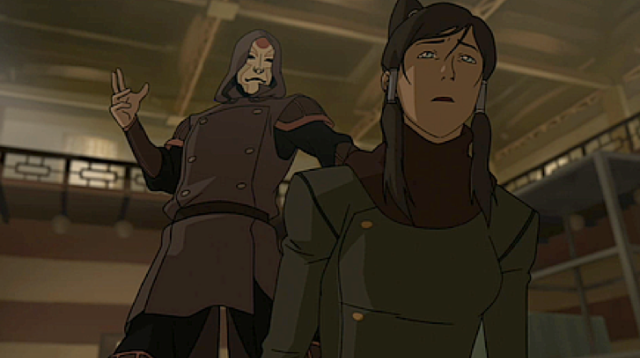
Overwhelmed with grief and horror, Korra still manages to access airbending when Amon is about to take away Mako’s firebending. Korra succeeds at stopping Amon from hurting Mako, demonstrating that she values her friends above her own wellbeing. Now being only an airbender, the one element that she was least proficient in, Korra travels to her home, the Southern Water Tribe. However, unable to restore her abilities, Korra is devastated. Eventually, though, Korra is able to connect with her previous incarnations, including Aang, who helps Korra regain her powers and teaches her how to restore them for others. With the help of the previous Avatars and her friends, Korra is eventually able to overpower Amon. Korra is then able to let go of her struggle to control her powers, which in turn allowed her to trust her own abilities and gain mastery of her Avatar state. Korra and Mako also begin dating.
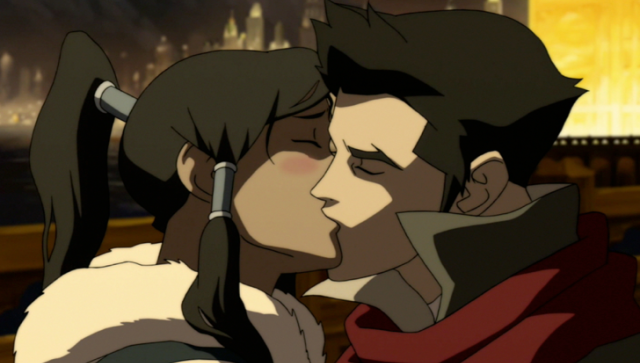
As Korra continues her training, she decides to begin training with her uncle, Unalaq, the waterbending master and chief of the Water Tribes, in order to learn about the spirits and their world. Under Unalaq’s instruction, Korra opens the Spirit portal at the South Pole. However, Northern Navy ships occupy the Southern Water Tribe’s ports, leading to civil war. When she finds out that Unalaq was behind a number of lies surrounding her father, Korra stands up to him.
As the tensions of the war are starting to rise, Korra and her boyfriend, Mako, experience tension in their own relationship as well. Korra is trying to do whatever is necessary to free her people, while Mako insists on playing by the rules. The lovers blow up on each other and break up. Going against the President’s orders, Korra travels to the Fire Nation to seek help for her tribe. However, on the way there Unalaq’s children, twins Desna and Eska, attack her. Between getting attacked by her cousins and then a dark spirit who ambushed her along the way, Korra loses consciousness and her memory. In order to help Korra get her memory back, a healer places her in spirit water. This allows Korra to reconnect with her the past Avatars, including the first Avatar, Wan. Korra learns that Wan was able to master the four elements and fuse with Raava, the spirit of light and peace, during the Harmonic Convergence. Harmonic Convergence is said to be a supernatural phenomenon that takes place every 10,000 years when all the planets align and the Northern and Southern spirit portals are open. During the Convergence Raava and her evil counterpart, Vaatu, must fight in order to determine which spirit would rule over the next 10,000 years – the light or the dark. Neither spirit, however, can ever fully destroy the other. With Raava’s help, Wan was able to capture and imprison Vaatu.
Regaining her memory and realizing that Unalaq intends to open the Northern Spirit Portal in order to let out Vaatu, Korra and her team attempt to stop him. Despite their efforts, Unalaq was able to free Vaatu and fuse with him, becoming the first Dark Avatar.
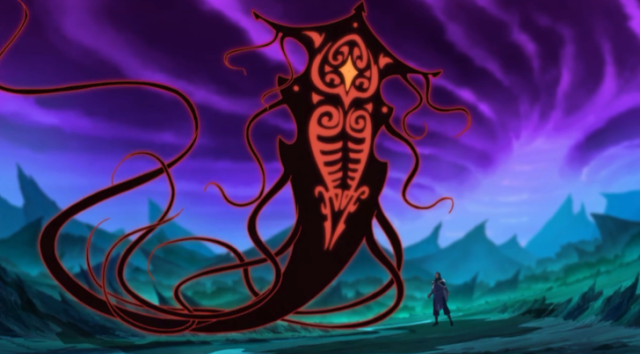
Unalaq and Vaatu (or Unavaatu) overpower Korra and extract Raava from her, destroying the light spirit, along with Korra’s connection with the previous Avatars. Since neither of the two spirits is able to fully destroy one another, Raava’s spirit is once again reborn inside Unavaatu. Korra is able to fuse with Raava once again and defeat Unavaatu, but her connection with her previous reincarnations is gone forever.
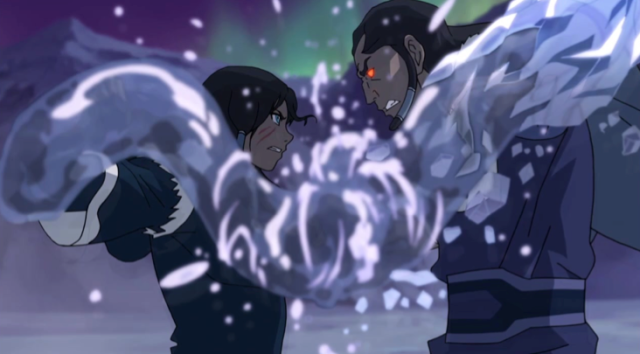
Harmonic Convergence brings a number of changes, most importantly, the reopening of the spirit portals allowed many people around the world to airbend. Korra initially struggles with the loss of connection with her previous Avatar reincarnations. After she tries to meditate to force the connection but she is unsuccessful; devastated, she expresses her emotions to Tenzin, who reminds her that “true wisdom begins when we accept things as they are.” While Korra initially struggles with this concept, she begins to feel better once she receives a new mission – Daw, a citizen in the Republic City, overwhelmed with his new airbending ability, was about to jump off a bridge. Korra ends up rescuing him and tells him that she is having a rough day as well. The two are able to bond as Korra saves his life, realizing that she needs to help other airbenders who are also discovering their ability for the fist time.
Unfortunately not all new airbenders were good people. Zaheer, an anarchist extremist, who was in jail for many years due to his violent past, was able to free himself thanks to unlocking his new ability to airbend. In order to bring down the world leaders and create anarchy, Zaheer and his crew attempt to kidnap Korra on several occasions.
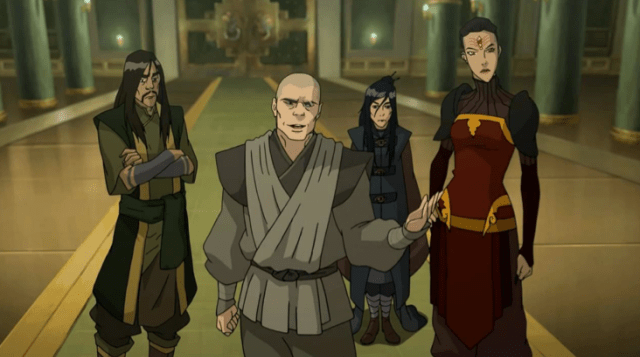
Only when her friends’ lives are at stake, and only because she volunteered to surrender to him in exchange for her friends’ lives, is Zaheer able to capture the Avatar. This turns out to be a trap, and Korra’s friends just barely make it out while Korra herself is subjected to extreme torture. Tied up and powerless, Korra is dosed with a metallic poison meant to induce her Avatar state and kill her, thereby not only ending her own life, but ending the Avatar cycle for good.
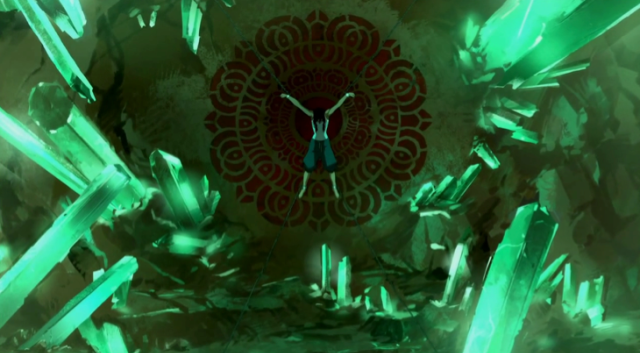
Although Korra initially breaks free of her chains and tries to destroy Zaheer, he uses his airbending ability to suffocate her. Tenzin’s daughter, Jinora, is able to lead the airbenders in creating a tornado, pulling Korra and Zaheer down in time to prevent Zaheer from killing the Avatar – but Korra is still dying from the poison. Before she dies, however, Su, a metalbender, is able to remove most of the poison from Korra’s body.
A few weeks later, prior to Jinora’s ceremony, Asami comforts Korra. She’s the only one who seems to understand what she’s going through and is the only one Korra seems to trust with the severity of her condition.

Korra’s PTSD:
Fast-forward three years, Korra is having all the symptoms of PTSD. PTSD occurs after someone witnessed or experienced a traumatic event and presents with the following categories of symptoms: re-experiencing (nightmares and flashbacks), arousal (hypervigilance, jumpiness), and avoidance (disconnecting from loved ones, avoiding talking about or thinking about the traumatic event). The symptoms need to persist over one month in order for PTSD to be diagnosed. Korra, who has had the symptoms for over three years, seems to meet all of the above listed criteria for PTSD. In addition, since Korra appears to be experiencing hallucinations, specifically, seeing herself in the Avatar state, it is possible that she is also experiencing psychosis. PTSD and hallucinations or delusions often occur together.
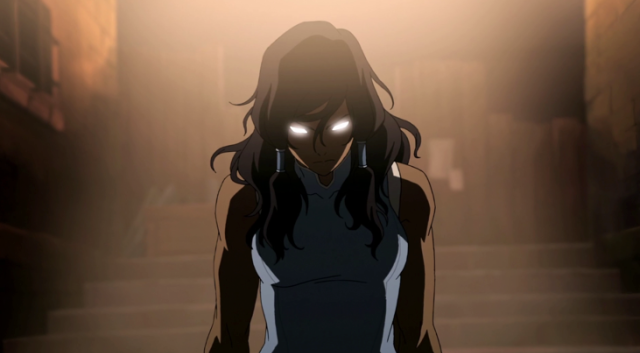
Korra is so traumatized that she struggles with taking care of herself – she is not eating, not sleeping, and not communicating with others. She finally agrees to see Katara, a healer. As Korra goes through physical therapy with Katara, she frequently experiences flashbacks of the time when Zaheer was trying to suffocate her. In fact, this vision, along with a few others, comes up when Korra seems to be least prepared, nearly paralyzing her with fear and making her unable to continue walking or fighting.
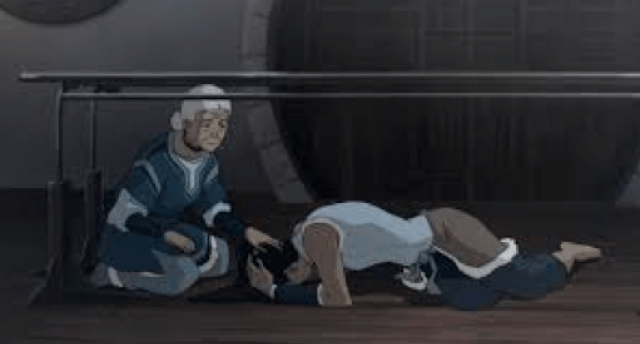
Why do these intrusive memories appear?
There could be several explanations for this. One explanation has to do with the fact that we learn to associate certain cues in our body or our environment with danger. For example, when Zaheer was choking Korra, she felt out of breath, which obviously scared her. It is possible that in other situations where Korra is out of breath, such as when she is relearning to walk or when she is sparring, she gets triggered, and therefore remembers the time when she was in danger, causing her to go into a “freeze” mode. While many people have heard of the “fight or flight” mode, where our heart might pound faster, our breathing might become shallower, our adrenaline will be pumping, getting us ready to either fight for our lives or run away, the “freeze” mode is not as commonly known. In fact, many people freeze up during or after trauma. It has nothing to do with being brave or being a coward, it is just a physiological response that our bodies sometimes produce. In Korra’s case, because her traumatic event was so substantial it makes sense that her “freeze” response might transfer to other situations where she might experience a similar physical sensation – being out of breath.
In addition to the “characteristic” symptoms of PTSD, many people, especially service members, police officers, firemen, and people in similar professions, are likely to experience shame about not being able to be a hero in the same capacity after the trauma. This is very much the case for Korra. Her identity is so closely tied to her being the Avatar, the rescuer, that she struggles with being left out of helping others. Overcome by grief about her identity change, Korra seems to be experiencing hopelessness about whether her situation will ever improve and is neglecting all the progress that she has made. This too is common for people experiencing PTSD. Many people with trauma who are undergoing treatment wish to see immediate results, forgetting that physical and mental wounds take a long time to heal.
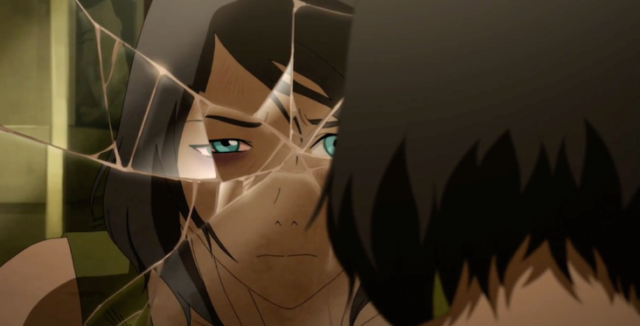
PTSD Treatment and recovery:
The treatment most heavily supported by research to help with PTSD is called Cognitive Processing Therapy (CPT). As a part of CPT, the trauma survivor is taught to face his or her fear in safe way. This is called exposure. In addition, the trauma survivors are also taught to accept their traumatic experiences, rather than forming unhelpful beliefs, such as “this was all my fault,” and instead form new meanings from the traumatic experiences. Korra was able to do exactly that. While her initial instinct was to run away from her pain, she didn’t seem to be able to get rid of it, feeling more and more hopeless and emotionally drained.
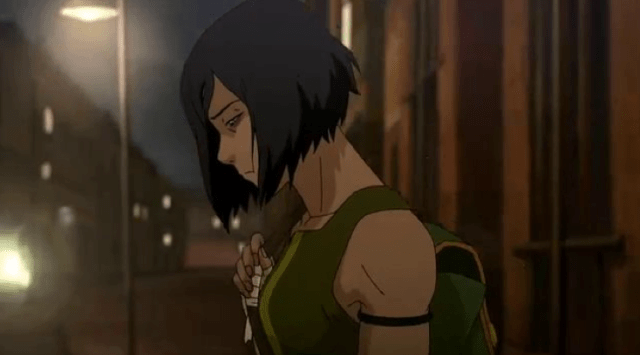
Toph, an earthbender who used to work with Aang, realized that Korra was avoiding facing her past traumas. Instead of letting her off the hook, Toph insists that in order to recover, Korra must “release the fear” and stop fighting herself. Toph realizes that Korra still has some leftover poison inside of her, but anytime she tries to help Korra take it out, Korra resists. This is a terrific metaphor. Trauma is a lot like poison or an infection. We need to treat it in order to get it out of our systems. Sometimes getting rid of an infection means applying medicine, such as iodine, to the infection site. This might hurt – but in the long run, this will help us heal. On the other hand, ignoring the infection might feel good in the short term because we don’t have to deal with the burning sensation of iodine; but in the long term, the infection is still there, poisoning us from the inside.
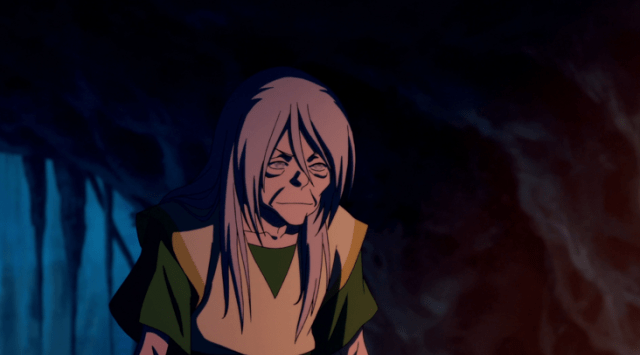
After going to the Banyangrove tree with Toph, Korra is able to connect with herself, as well as Tenzin’s children, who came to find her. Korra was finally able to get rid of the remnants of the poison in her body though not without the images of Zaheer still taunting her. Getting some of the trauma out will often surprise people in how much “lighter” they might feel after getting it off their chest. That is exactly what Korra reports after getting the last bits of the poison out of her body.
However, Korra’s battle isn’t over. In helping the world against Kuvira, an earthbending dictator, Korra still avoids going into the Avatar state as much as possible. When she attempts to do so during her fight with Kuvira, Korra hallucinates again, seeming to still be stuck in feeling powerless. In a later conversation with Asami, Korra states that she believes that every bad thing that happened, including Zaheer and Kuvira, were her fault, while Asami is trying to remind Korra of all the good things she has accomplished.
Korra is only able to fully recover when she lets go of her struggles and faces her biggest fear – her attacker, Zaheer. Zaheer reminds Korra that the poison should have killed her but she survived. He states that her power is limitless, reminding Korra how powerful, rather than powerless, she really is. Zaheer leads Korra into the spirit world and encourages her to watch, rather than run away from, her worst memories. Once Korra is able to do that, she overcame her fear, later telling Mako, “I feel whole again. I feel good.” When Mako asked her whether she would ever be able to forget what Zaheer did to her, Korra replied, “No. But I am finally able to accept what happened and I think that’s going to make me stronger.”
Making meaning out of trauma:
When Kuvira utilizes the giant mecha suits in order to take over Republic City, Korra and her friends are able to stop her. At the last moment Korra, in her Avatar state, saves Kuvira from imminent death and brings her into the Spirit World. When Kuvira confides in her about being an orphan and wanting to create a place where she felt safe. Korra responds, “I know what it’s like to be afraid. After I was poisoned, I would have done anything to feel in control… I know I was in a pretty dark place after I was poisoned, but I finally understand why I had to go through all that. I needed to understand what true suffering was, so I could become more compassionate to others.”
Korra’s growth is truly an inspiration. It is true that once we have suffered in some way, any way, we are more likely to be able to relate to others around us. Finding meaning in this way allowed Korra to switch from being a victim to becoming a survivor. She was no longer tormented by her memories because she was no longer running from them. This allowed her to discover who she really is and what she wanted to stand for – love, strength, peace, and compassion. After helping Asami mourn her feather’ death, Korra suggests that the two women take a vacation together.
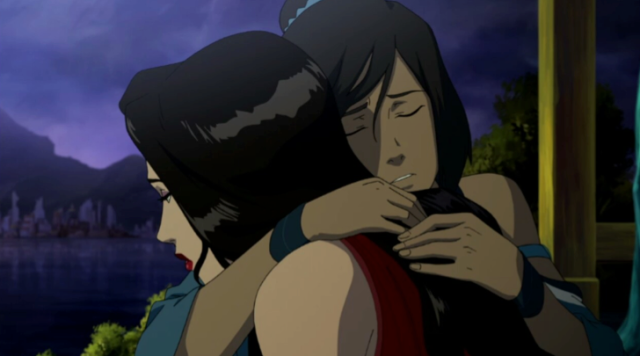
The two are then seen walking toward the spirit world hand-in-hand, getting ready for their new adventure as a couple.
Dr. Janina Scarlet is a Licensed Clinical Psychologist, a scientist, and a full time geek. She uses Superhero Therapy to help patients with anxiety, depression, chronic pain, and trauma at the Center for Stress and Anxiety Management and Sharp Memorial Hospital. Dr. Scarlet is also a professor at Alliant International University, San Diego. Dr. Scarlet has presented her work at professional psychological conferences, as well as a number of pop culture conventions, such as San Diego Comic-Con. She has been interviewed about her work on Huffington Post Live, as well as numerous podcasts.
If you would like to learn more about Superhero Therapy, please feel free to contact Dr. Janina Scarlet via Twitter, Facebook, or via her website at www.superhero-therapy.com.
Are you following The Mary Sue on Twitter, Facebook, Tumblr, Pinterest, & Google +?



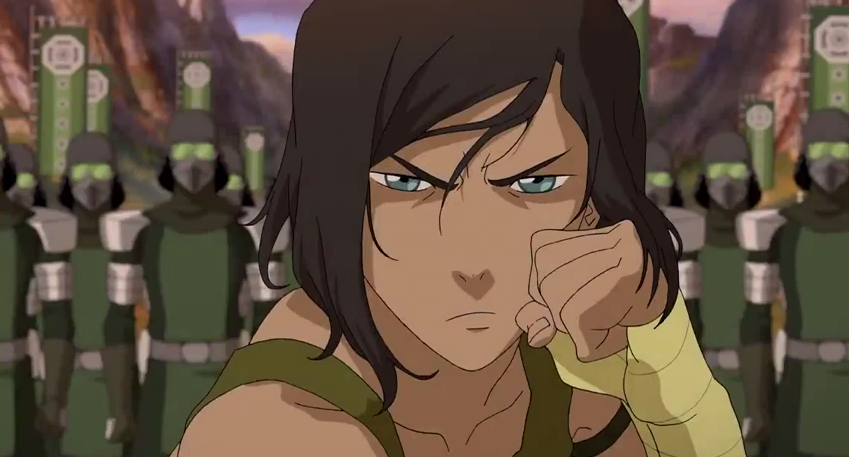
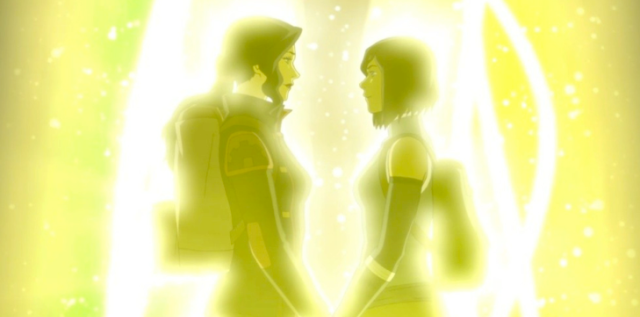





Published: Jan 6, 2015 08:00 pm